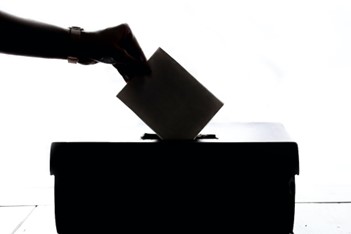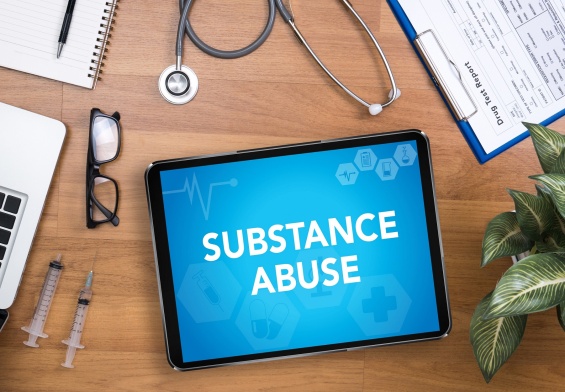Originally posted on: https://commonlegalquestions.com/litigation-trends-predicted-for-2023/
“Disputes emerge in times of upheaval, and it appears that nearly every kind of upheaval is happening right now,” observes Julian Copeman, a disputes partner at Herbert Smith Freehills, concisely outlining market predictions for 2023. The year is shaping up to be quite hectic.
Factors such as the conflict in Ukraine, skyrocketing inflation, rising interest rates, and a cost of living crisis have made business conditions increasingly unstable. Furthermore, ongoing litigation related to the Covid pandemic suggests that litigators are in for a prosperous year.
Hogan Lovells financial services litigation partner Alex Sciannaca notes, “During more stable times, parties might opt to wait before initiating claims, but given the economic decline and mounting financial stress on some businesses, delaying may no longer be an option – the urgency to pursue claims earlier rather than later increases.”
Similar to how many disputes originating from the financial crisis only gained momentum in the 2010s, experts anticipate that 2023 will witness the initiation of numerous cases involving contract breaches due to Covid.
Copeman elaborates, “When the 2008 credit crunch struck, people wondered, ‘Where’s the litigation?’ We expected to see litigation arising.” It didn’t materialize in 2008, as most efforts were focused on addressing immediate concerns. However, it surfaced in the early 2010s and persisted until around 2018. Now, we can expect disputes to commence and continue for the next few years.”
Lingering Impact of COVID-19 Litigation
Over two years since the onset of the pandemic, the court system is gradually regaining a semblance of normality. Commercial litigation is inching closer to pre-pandemic levels, yet many litigators continue to face challenges in advancing their cases to trial. Although court backlogs remain substantial across the nation, geographical variations contribute to a more “normal” litigation experience in some jurisdictions.
The rise in remote work among professionals is transforming the landscape of litigation. Cutting-edge technology has enabled remote case handling and depositions in many scenarios. Before the pandemic, litigators were wary of remote alternatives, fearing they would facilitate unethical witness coaching and manipulation. However, as standards have evolved and practices have become more widespread, trust in remote options has grown.
In some respects, the pandemic has served as a catalyst for law firms to adopt innovative technologies. The need to adapt over the past two years has resulted in litigators and experts embracing greater flexibility regarding work locations. Legal teams are increasingly comfortable with remote processes and appreciate the logistical benefits they provide. It remains to be seen how cases will be managed in the future, whether remotely, in-person, or through a hybrid approach.
ESG – Related Disputes
Alison Wilson, Linklaters’ global disputes head, notes that ESG-related disputes have been shaping the global disputes market since 2020. She explains that there has been a surge in greenwashing claims, actions against governments for insufficient climate response, and attention from other regulatory bodies like the Competition and Markets Authority and the Advertising Standards Agency regarding false advertising allegations.
Sciannaca cautions that businesses must recognize their potential liability for the actions of their overseas subsidiaries. They also need to conduct thorough due diligence and monitor international suppliers to ensure compliance with anti-bribery and corruption standards. Legal actions initiated by NGOs can present unique challenges, as their motivations might extend beyond financial compensation to driving meaningful change. Partners report an increase in disputes mandates across all aspects of ESG, including compliance work, as well as supply chain disputes concerning sustainability and modern slavery issues.
Group Litigation
The rising prominence of group claims, which have long been prevalent in jurisdictions such as Australia and the US, is expected to become more noticeable globally. Countries worldwide are simplifying the process for plaintiffs, including both consumers and businesses, to seek damages in court against entities whose actions have caused harm.
Many legal professionals anticipate a surge in case demand, driven by the inability of courts, regulators, and enforcement agencies to hold corporations accountable for what are often deemed low-level, but broadly consequential, damages. There is also an increasing interest in pursuing cases related to environmental, social, and governance (ESG) issues and data breaches.
The growing trend of lawyers exploring alternative fee arrangements beyond the traditional billable hour, along with the expanding availability of litigation financing and insurance solutions to mitigate downside risks, contributes to ensuring greater access to justice in more countries, similar to what others have experienced for decades.
Litigation Funding
As general disputes and group litigation activities are anticipated to be bustling, it is no surprise that litigation funding activity is also predicted to flourish. Sciannaca notes that an “increasing number of clients are exploring litigation funding as a means to pursue claims, even those who might not have been previously interested in it.”
Copeman further explains, “During uncertain times, people tend to invest in seemingly safer options. Funders have a diverse range of cases and understand how to distribute risk, so capital will continue to flow towards litigation funding. Over the past few years, this has become a driving force within the market.”
Competition Litigation
Competition disputes have been on the rise in recent years, and many expect this trend to persist. At Linklaters, Wilson states, ‘the competition litigation arena will be incredibly fascinating. It will be intriguing to observe how the competition appeals tribunal handles the growing number of non-traditional claims. We are witnessing a shift from exclusively traditional competition claims, like price-fixing or abuse of dominance, to more expansive allegations of unfair trading practices.’
Copeman draws attention to the emergence of competition class actions, citing the Meta claim his firm is advising on. “Claims against Big Tech are increasingly being framed as competition claims, leading to contentious competition litigation.”
Meanwhile, Travers Smith dispute resolution partner Toby Robinson remarks, ‘I anticipate funders to persist in viewing competition claims as potentially fruitful, albeit uncertain, territory.’ However, he cautions that “funders are not charitable organizations – as long as difficulties in determining damages persist, they will be hesitant to finance claims.”
Cryptocurrency & Blockchain
During past economic recessions and downturns, governments typically shift their focus. This change often results in increased oversight, scrutiny, and repercussions for companies whose actions may have contributed to or accelerated a recession or downturn. Governments aim to safeguard their consumers and economy by initiating more lawsuits and investigations.
Historically, this has meant that companies in specific industries were more likely to be targeted. For instance, during the Great Recession, the SEC concentrated on housing and mortgage market companies for their misconduct and misrepresentation toward consumers. In 2023, the new industry in the spotlight appears to be cryptocurrency.
High-risk cryptocurrency companies are currently under rigorous global investigation by entities such as the U.S. Department of Justice, the International Monetary Fund, the International Organization of Securities Commissions, and the UK government.
Cryptocurrencies have had significant adverse economic consequences worldwide, and more regulation and scrutiny are forthcoming for these companies. Firms with interests in, or considering, cryptocurrencies must also be prepared to comply with new requirements for disclosure, documentation, registration, and more.
Practice Area Trends
Litigation targeting technology companies, social platforms, cryptocurrencies, and more is on the rise. From auto-renewal subscriptions to copyright concerns in the realm of AI, legal disputes surrounding technology will undoubtedly escalate in the coming years.
Technology is not the only sector experiencing a surge in litigation – medical malpractice is another area witnessing an uptick, as some worry that doctors may be at risk following the Supreme Court’s decision on Roe v. Wade. Entering 2023, medical professionals face a challenging situation as the legalities governing their work remain in flux.
Employment litigation is also predicted to increase in the upcoming years, as employees and management continue to adapt to a new normal in the aftermath of the pandemic. Issues such as returning to the workplace, wage disputes, and workplace safety are contributing to a more dynamic post-pandemic employment litigation landscape.
Without a doubt, 2023 will be a fascinating year for litigation. As we move further away from the pandemic and technology continues to evolve, emerging trends will shape the industry for years to come.




